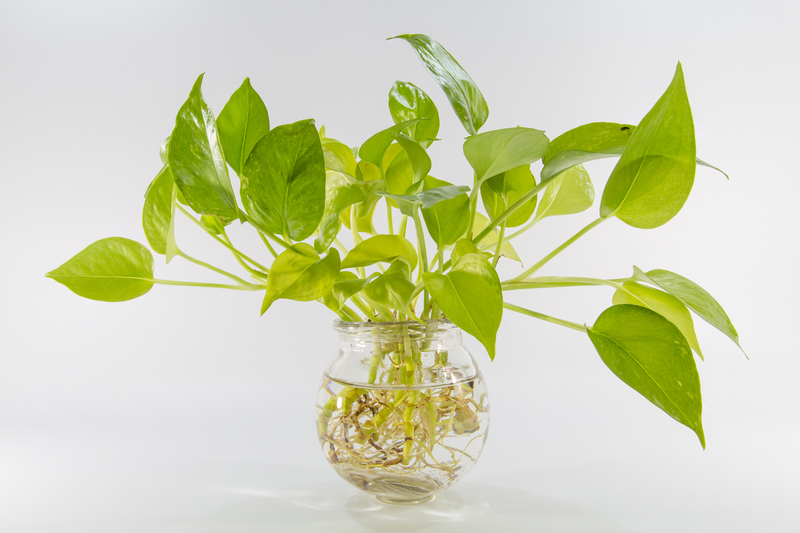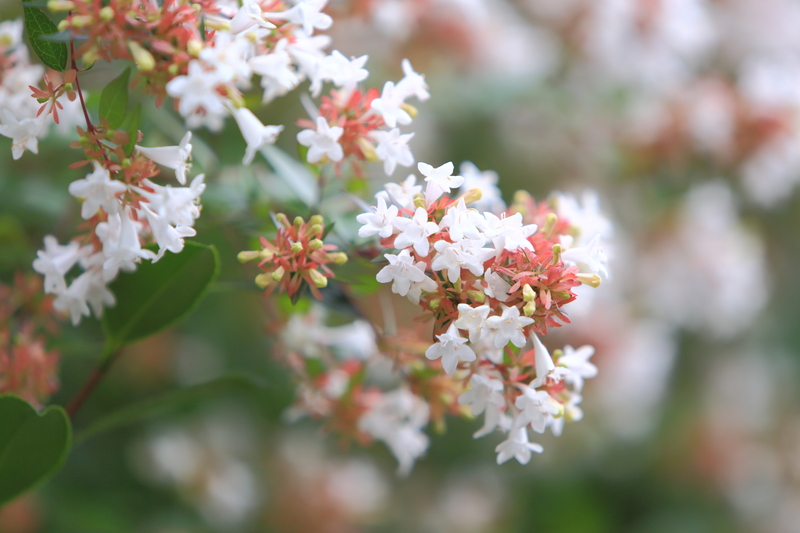Cultivating Orchids with Ease
Posted on 20/05/2025
Cultivating Orchids with Ease: An In-Depth Guide for Beginners and Enthusiasts
Orchids are often regarded as the "jewels of the plant world" due to their exquisite blooms and fascinating forms. While once considered the domain of expert horticulturists, cultivating orchids with ease is truly attainable by anyone with the right information and a dose of patience. In this comprehensive guide, discover the secrets to raising dazzling orchids in your home or garden, explore various orchid types, learn about common challenges, and unlock the techniques that make orchid care straightforward and deeply rewarding.

Understanding Orchids: Varieties, Appeal, and Adaptability
What Makes Orchids Unique?
Orchids comprise one of the largest and most diverse families of flowering plants, boasting over 25,000 species and countless hybrids. They can be found in rainforests, grasslands, mountains, and even deserts. Their popularity stems from:
- Stunning blossoms ranging from petite to palm-sized, spanning nearly every color imaginable.
- Long-lasting flowers with intricate structures that captivate both novice and expert plant lovers.
- Adaptability to a wide array of environments, suitable for indoor and outdoor cultivation.
Contrary to popular belief, orchid cultivation isn't reserved for the green-thumbed elite. With a little know-how, anyone can nurture these mesmerizing plants with minimal difficulty.
Choosing the Right Orchid for Effortless Cultivation
Embarking on your orchid journey starts with choosing the most suitable varieties. Some orchids are more tolerant of indoor conditions and beginners' errors than others.
Top Easy-to-Grow Orchids
- Phalaenopsis (Moth Orchid): These forgiving orchids are the best introduction for beginners, prized for their ease of care and prolific, long-lasting blooms.
- Dendrobium: Attractive and resilient, many dendrobium varieties thrive indoors with minimum fuss.
- Cattleya: Known as the "queen of orchids," cattleya produce showy flowers and adapt well to houseplant conditions.
- Paphiopedilum (Lady Slipper): These unique orchids are grown for their slipper-shaped pouches and can tolerate lower light than most, making them ideal for homes.
Tip: When acquiring an orchid, always select healthy plants with firm, green leaves and visible, robust roots. Avoid specimens with shriveled bulbs, droopy leaves, or signs of pests.
Setting Up the Perfect Home for Your Orchid
Light: The Key to Thriving Orchids
Adequate lighting is essential for successful orchid cultivation. Most orchids favor bright, indirect sunlight:
- Place orchids near an east- or south-facing window with filtered light.
- If using artificial lights, opt for full-spectrum LED or fluorescent bulbs to simulate natural daylight.
- Leaf color offers clues: deep green signals too little light, while yellowish leaves suggest excessive exposure.
Humidity and Air Circulation
Orchids naturally thrive in humid climates. For optimal growth:
- Maintain humidity between 40%-70% for most species. Use a humidity tray, room humidifier, or group plants together for shared moisture.
- Ensure gentle air movement to prevent mold and pests, but avoid cold drafts directly on the plant.
Remember: Good air circulation is as important as humidity--still, damp air can lead to disease.
Choosing the Right Potting Medium
Orchids typically grow on trees in nature, not in soil. The best potting mixes for easy orchid cultivation include:
- Bark-based: Mimics natural habitat, provides excellent drainage.
- Sphagnum moss: Retains moisture; best for drier climates or smaller pots.
- Perlite or charcoal: Enhances drainage and air infiltration.
Important: Never use standard garden soil for orchids. Specialized orchid mixes are widely available and make cultivating orchids straightforward for all skill levels.
Orchid Watering: Simplicity is Key
How Often Should You Water Orchids?
One of the most common questions is how frequently to water orchids. The answer largely depends on the orchid type, season, and environment. However, the golden rule is:
- Allow the potting mix to dry slightly between waterings. Avoid letting the roots stand in water, as this can cause rot.
- Generally, watering once a week is sufficient for most indoor orchids. In warmer or drier climates, you might water every 4-5 days.
- Use room-temperature water, and try to water in the morning so excess moisture evaporates by nightfall.
Signs of Over- or Under-Watering
- Over-watered orchids: Yellowing, limp leaves, blackened roots.
- Under-watered orchids: Wrinkled, leathery leaves, silvery roots, stunted growth.
Tip: Clear plastic pots help you monitor root health and moisture levels, which is especially useful for beginners.
Fertilizing Orchids Made Simple
Choosing a Balanced Fertilizer
Regular feeding keeps orchids robust and encourages beautiful blooms. For easy orchid growth:
- Use a balanced, water-soluble fertilizer (20-20-20 or similar) every 2-4 weeks, diluted to half strength.
- Avoid fertilizing during dormancy (usually after flowering).
- Flush the potting medium with plain water monthly to remove salt buildup that can harm roots.
Remember: "Weakly, weekly" is a popular orchid feeding mantra--less is often more!
The Orchid Repotting Process Made Effortless
When and How to Repot Orchids
Orchids should be repotted every 1-2 years to ensure healthy root systems and prevent decomposed potting medium from suffocating the roots. Key signs your orchid needs repotting include:
- Roots growing out of the pot
- Medium breaking down into fine particles
- Declining health or reduced flowering
Repotting Steps for Ease:
- Gently remove the orchid from its pot and shake off old media.
- Trim away dead or rotten roots with sterilized scissors.
- Place the plant in a slightly larger pot with fresh orchid mix, ensuring the base is secure but not buried.
- Do not water immediately; allow the roots to settle for 1-2 days before resuming normal care.
Pro Tip: Repot immediately after blooming for best results. If you see healthy roots and new growth, it's the ideal time to refresh their environment.
Troubleshooting Common Orchid Problems
Dealing with Pests and Diseases
While easy orchid cultivation is mostly trouble-free, occasionally you may encounter issues. Stay vigilant for:
- Aphids, scale, or mealybugs: Remove with rubbing alcohol on a cotton swab or use insecticidal soap.
- Root rot: Always check for overwatering. Trim affected roots and repot in fresh, dry medium.
- Leaf spots or fungal/bacterial infections: Enhance air circulation, remove affected leaves, and apply an appropriate fungicide if necessary.
Why Won't My Orchid Bloom?
If your orchid's foliage is lush but it refuses to flower, the cause is often:
- Insufficient light: Increase exposure gradually, but always avoid harsh, direct midday sun.
- Lack of temperature change: Many orchids require a slight drop in nighttime temperatures to trigger blooming cycles--try moving the plant to a cooler room or closer to a window overnight.
- Overfeeding: Reduce fertilizer, allowing the plant to rest as needed.
Patience pays off: With good care, even a reluctant orchid will eventually display its magnificent blooms.
Proven Strategies for Effortless Orchid Care
Routine Orchid Maintenance Tips
- Keep orchid leaves clean by gently wiping them with a damp, soft cloth to ensure optimal photosynthesis and discourage pests.
- Rotate orchids periodically for even light exposure and balanced growth.
- Stay consistent with watering and feeding schedules, but adjust for season and plant growth.
- Observe your plant closely--changes in leaf color, sponginess, or flower drop signal the need for adjustment.
Seasonal Care for Orchids
Spring/Summer: Watch for active growth, repot as needed, and provide ample moisture and nutrients.
Fall/Winter: Reduce watering, provide cooler night temperatures, and be patient--this rest period often precedes the next growth or flowering cycle.
Why Growing Orchids is Easier Than You Think
The key to cultivating orchids with ease is understanding their natural needs. Most failed attempts stem from overwatering, poor drainage, or improper lighting. By selecting beginner-friendly species, providing the right filtered light and humidity, and resisting the urge to fuss excessively, you'll find that orchids are remarkably resilient.
Thousands of orchid growers around the world enjoy thriving plants, even in apartments or offices, thanks to modern potting mixes and easy-care guidelines. Orchids reward minimal effort with months of sensational blooms, unique forms, and a sense of accomplishment that grows with every flower spike.

Frequently Asked Questions About Cultivating Orchids with Ease
Can I Grow Orchids in My Apartment?
Absolutely! Many orchids, especially Phalaenopsis and Paphiopedilum, thrive in conditions typical of apartments. Just provide bright, indirect light and moderate humidity.
How Long Do Orchid Blooms Last?
Some orchids, like Phalaenopsis, can hold their flowers for 2-3 months or longer. Proper care during blooming extends display time.
Are Orchids Safe Around Pets?
Most orchids are nontoxic to pets. However, always prevent pets from chewing on plants to avoid digestive upset or choking hazards.
Is Growing Orchids Expensive?
Not at all! Basic orchid care requires minimal investment beyond the initial plant and proper potting mix. With longevity and repeat blooming, orchids offer great value amid stunning beauty.
Conclusion: Start Your Orchid Journey Today
Cultivating orchids with ease is within reach for everyone. By choosing forgiving species, mimicking natural habitats, and following straightforward care routines, you'll enjoy the exhilarating transformation from novice to seasoned orchid grower. As you master the basics and delight in each colorful bloom, you'll understand why orchids have enchanted plant lovers for centuries. Give these elegant plants a place in your home--your horticultural confidence and living space will blossom together!
Ready to dive in? Pick your favorite beginner-friendly orchid, set up its ideal environment, and embrace the satisfying art of easy orchid cultivation today!

